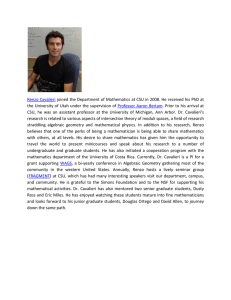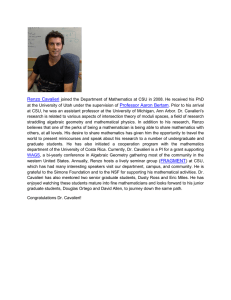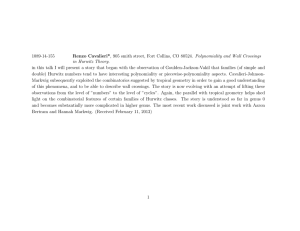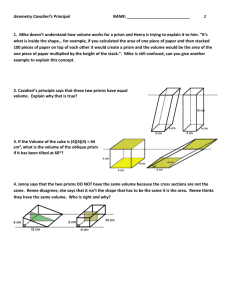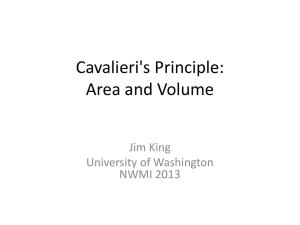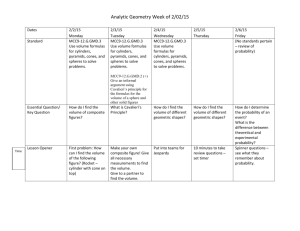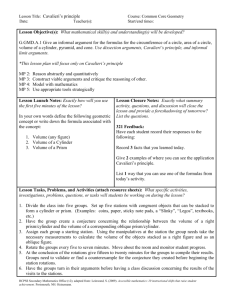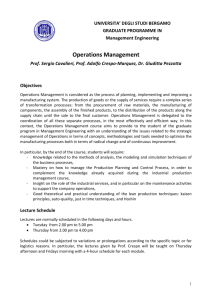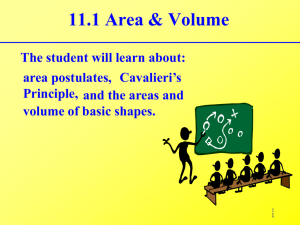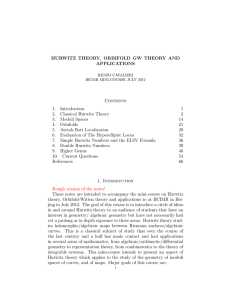Renzo Cavalieri SACNAS 2009 ...a journey from Physics to Combinatorics Colorado State University
advertisement
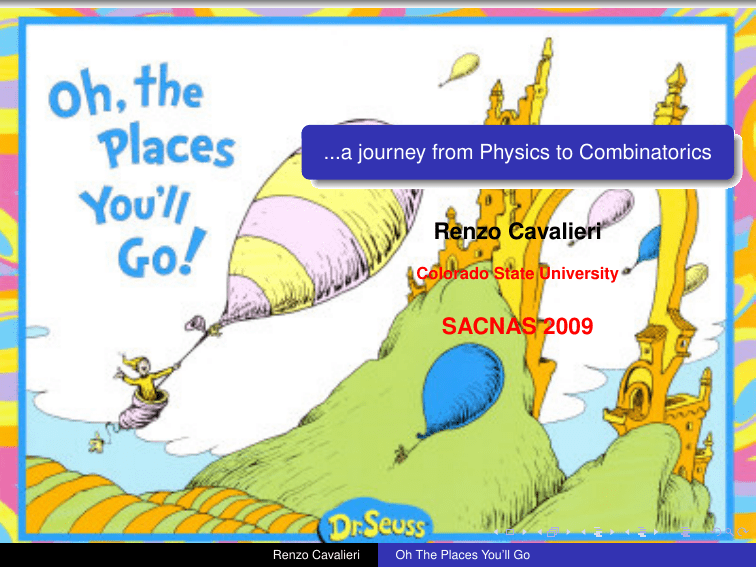
...a journey from Physics to Combinatorics Renzo Cavalieri Colorado State University SACNAS 2009 Renzo Cavalieri Oh The Places You’ll Go Physics Physicists tell us that matter consists of tiny little strings that wiggle their way through Space Time. In doing so they trace surfaces, which represent the evolution of a physical system. These surfaces come with a complex structure. SpaceTime Complex Surface Strings C| Time It seems reasonable that physicists want to know as much as possible about analytic functions between surfaces. Renzo Cavalieri Oh The Places You’ll Go Geometry Geometers have been studying such maps for over a century, and know they are ramified covers: away from a finite number of points (branch points), there are exactly d preimages. X | C,z w=z 2 C,w | | C,z w=z 3 F | C,w Y Above a branch point, the local expression of the function is z 7→ z n , and the collection of the n’s above a branch is called the ramification profile. Renzo Cavalieri Oh The Places You’ll Go The Quest Q UESTION : how many covers of degree d from a genus g surface to a sphere, with specified ramification profile over two points and generic ramification over r other points? Torus 1 3 3 2 H1((3), (2,1)) F Sphere (2,1) (2,1) (3) Such number is called a Hurwitz number, denoted Hgr (α, β). Renzo Cavalieri Oh The Places You’ll Go Algebra Algebra gives us a way to compute Hurwitz number via the following construction: | C,z X 3 | C,z 2 1 w=z 2 | C,w w=z 3 F | C,w Y (12) (123) In order to count covers, we instead count (r + 2)-tuples σ0 , τ1 , . . . , τr , σ∞ of permutations of d points such that: 1 (σ0 , σ∞ ) have cycle type (α, β); 2 τ ’s are simple transpositions; 3 σ0 τ1 . . . τr σ∞ = Id 4 hσ0 , τ1 , . . . , τr , σ∞ i acts transitively on the d points Renzo Cavalieri Oh The Places You’ll Go Combinatorics The cut and join equations tell us how a permutation can change when you compose it with a simple transposition: 2 CUT 4 σ = (1234)(56) τ1 = (13) 2 ⇒ τ1 σ = (12)(34)(56) 2 2 4 ⇒ τ1 σ = (123564) σ = (1234)(56) τ1 = (35) JOIN 6 2 This gives us a way to compute Hurwitz number by instead counting weighted trivalent graphs. -2 2 H02 ((2, 1), (2, 1)) = 4 = -1 1 + 1 Renzo Cavalieri 2 3 -1 Oh The Places You’ll Go 1 -2 Sketch of further coolness... x1 + y2 >0 y x1 x1 +y1 <0 x1 +y1 =0 x1 +y1 >0 y x1 1 x1+x2 1 x1+x2 x2 y2 x2 y2 x1 y1 x1 y1 -x1-y x1+y 1 1 x 2 y x y2 x1 2 x1 x1+y2 y 2 x 1 2x 1 2 y2 x1+y2 x y 2 2(x1+y1 ) Renzo Cavalieri y 2 1 -2y1 Oh The Places You’ll Go
